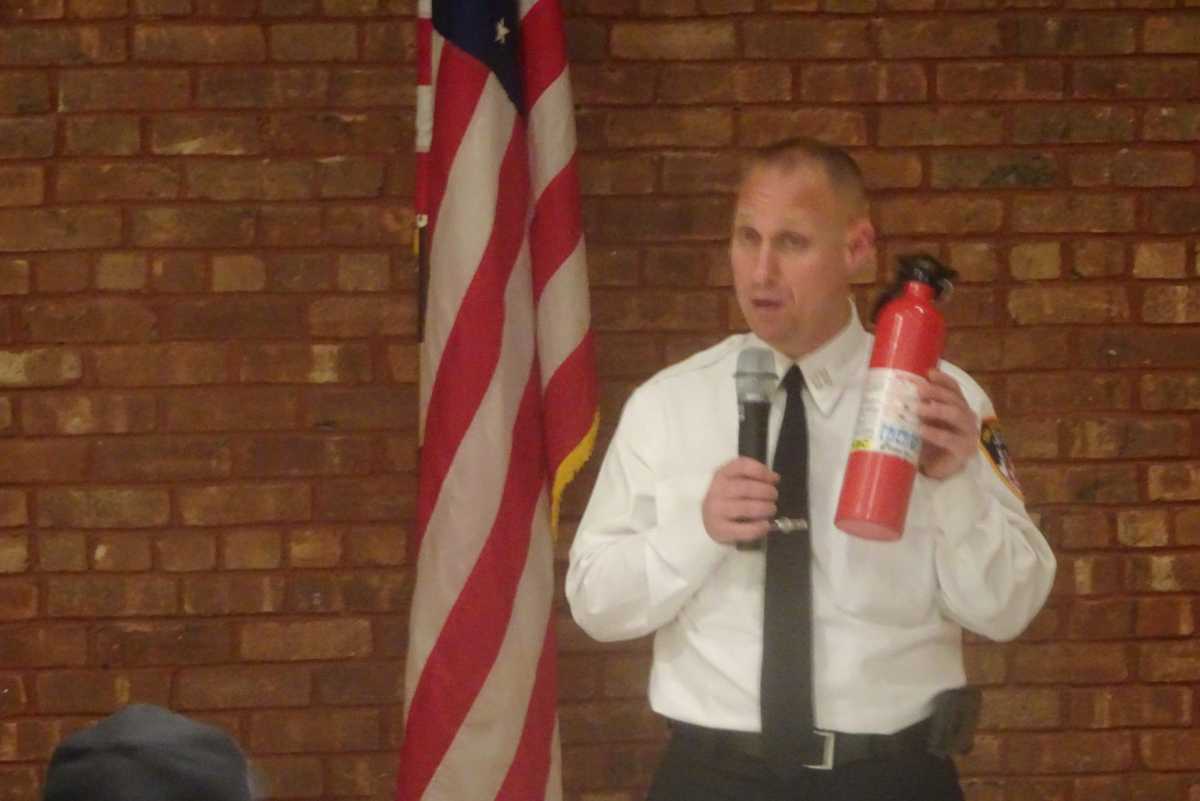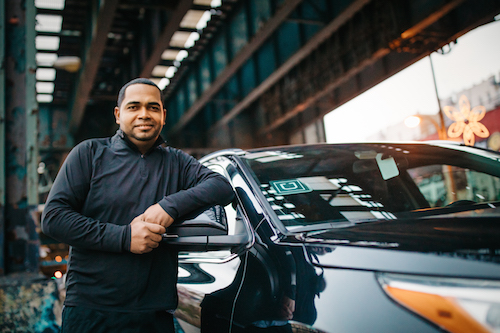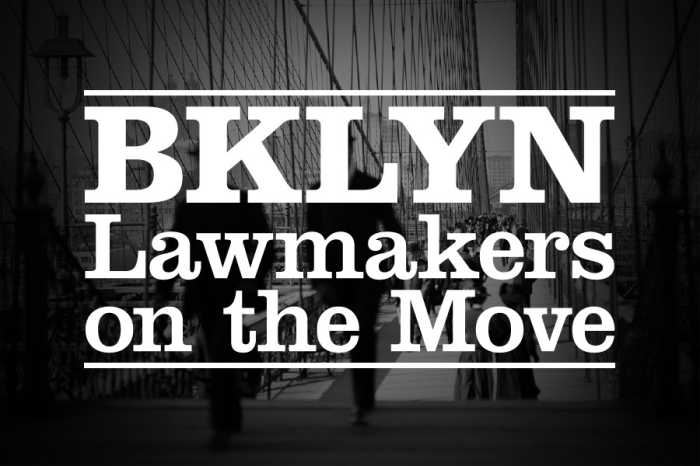When was the last time you tested your smoke detector? A month ago? Two months? A year?
According to FDNY Captain Michael Kozo, if you’re not checking it at least once a month, it’s not enough. Last night at a fire safety workshop, he asked everyone in the audience whether they had checked their alarms since the beginning of October. To his grave disappointment, only three raised their hands.
“Shame on you,” Kozo told the crowd. “Don’t tell me you still have fifteen days left in the month; I don’t want to hear it. Once a month, test your alarm. All you have to do is press the little button in the middle.”
On Oct. 17, the FDNY, in collaboration with the office of City Council Speaker Corey Johnson (D-Chelsea, Hell’s Kitchen), hosted a workshop on fire prevention and preparedness. The workshop took place at the New York City Fire Museum at 278 Spring St.
The workshop began with a brief introduction from Johnson’s Chief of Staff, Erik Bottcher. He said that the workshop is part of Corey Johnson’s ongoing effort to acquaint residents with the city’s most important agencies.
“For the last six years that Corey has been in office, we’ve had many, many events like this,” said Bottcher. “We’ve had dozens of events where we connect residents with city agencies of all kinds, to make sure that folks have the information that they need to keep themselves and their neighbors safe.”
Bottcher then gave the floor to Mike Kozo, who began by going over one of the most common sources of household fires – the kitchen. As he explained, a large percentage of fires start as a result of unattended cooking. When you commit yourself to cooking a meal, he said, any distraction can be deadly.
“I’m talking about people who start to cook, and then walk away from the stove,” said Kozo. “They’re going to answer the door. They’re going to watch the football game. ‘I can take a quick shower. It’s okay, I have time.’ You don’t have time. If you’re going to cook, you have to make sure that you stay by your stove, and that you cook.”
Kozo also advised the audience to keep baking soda on hand while cooking, as it’s one of the cheapest and safest tools to extinguish a grease fire.
After going over kitchen safety, he briefed the audience on fire extinguishers – one of the most essential tools in fire prevention, but also one of the most frequently misused. As he explained, there are three classes of fires that fire extinguishers are designed to put out. Class “A” extinguishers put out wood, paper and trash fires; class “B” extinguishers put out liquid and gas fires; and finally, class “C” extinguishers put out electrical fires.
To maximize safety and efficiency, Kozo advised purchasing an “ABC” extinguisher, which is equipped to put out all three. Such extinguishers will either have the letters “ABC” on the label, or its label will include three pictures corresponding to the three classes of fires.
He went on to teach the audience a mnemonic to help them remember how to use the extinguisher. The acronym “P.A.S.S.” refers to the four necessary steps – pulling the pin, aiming the device, squeezing the trigger, and sweeping it from side to side.
But while fire extinguishers and smoke alarms are essential tools in any household, your most important fire safety tool is your phone. New Yorkers, he said, should never hesitate to call 911 in the event of a potential fire.
“I don’t want anyone to misconstrue [this workshop] and not call 911,” said Kozo. “You can always call 911, get the ball rolling and prep your extinguisher. The worst that could happen is that we’ll get there and you’ll say, ‘I had a little fire on my stove. I put it out.'”
Similarly, he said, an average citizen should never try to rescue someone from a burning building. Without the proper training, they’ll only be putting themselves in danger.
“Call 911; don’t run in,” said Kozo. “A fire doubles in size every thirty to sixty seconds. That is not a lot of time. By the time you get out of that fire, get outside, realize that somebody’s missing and go back in, that fire is a lot worse than it was when you left. And you don’t have any of the gear that we have, nor do you have the training that we have. You’re gonna go in there with nothing. And believe me when I tell you that after you take two or three breaths, you’re going down.
“The best thing you can do at this point is to call 911 and let us know that there’s someone still inside.”










